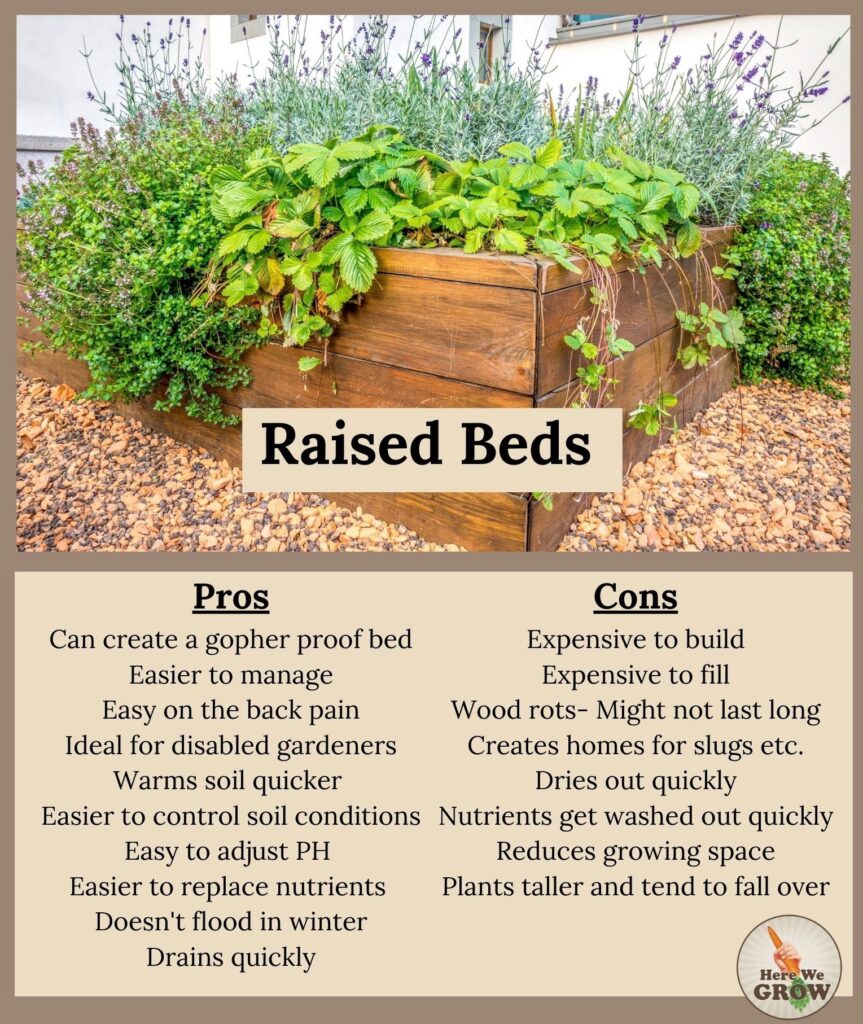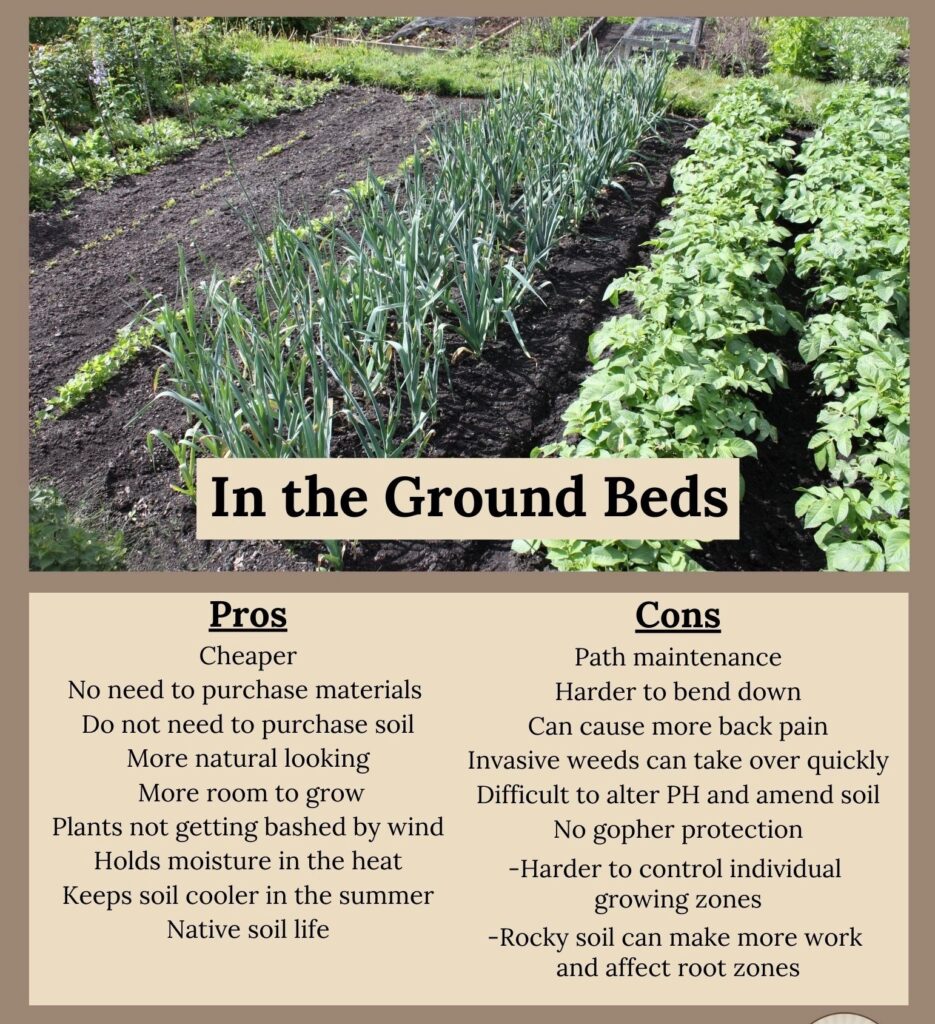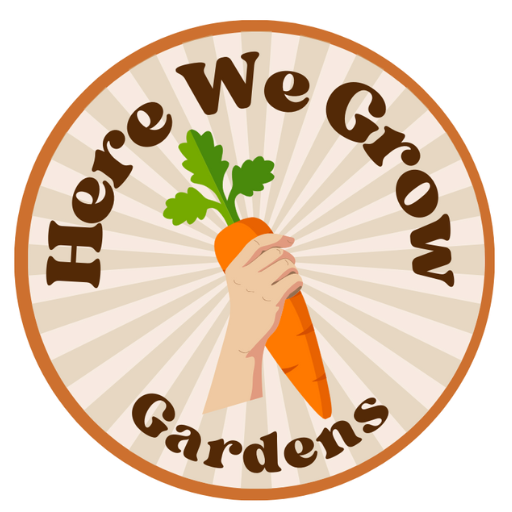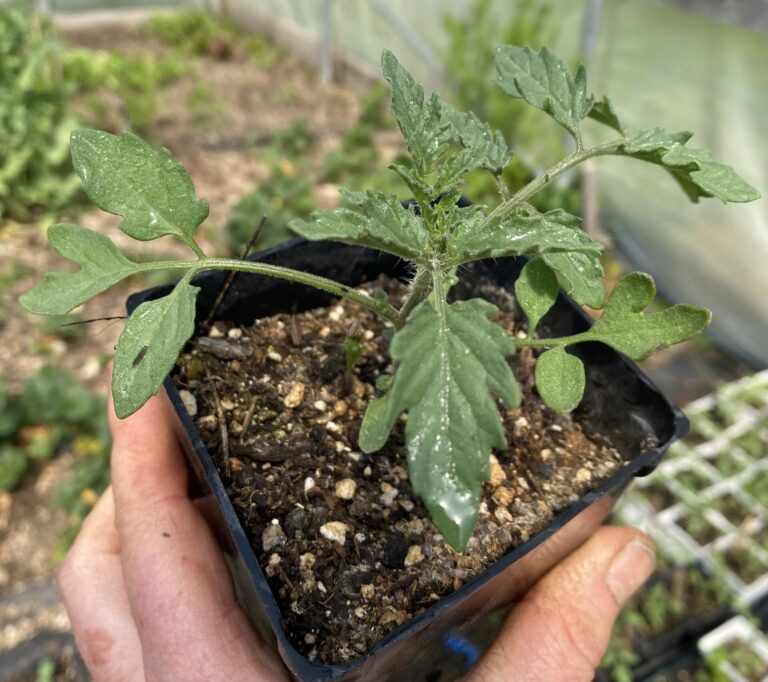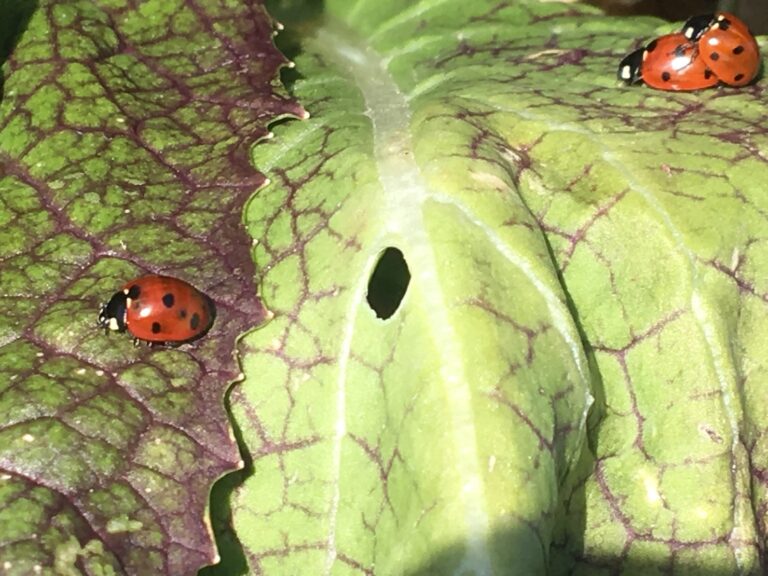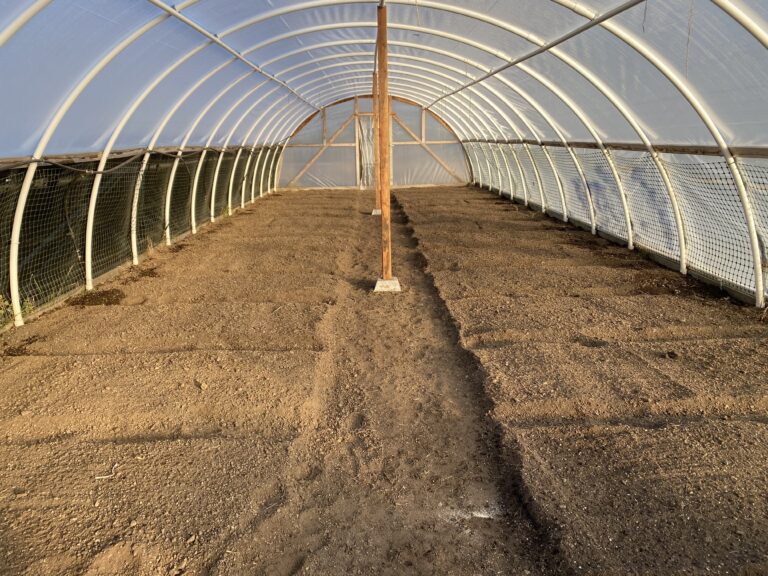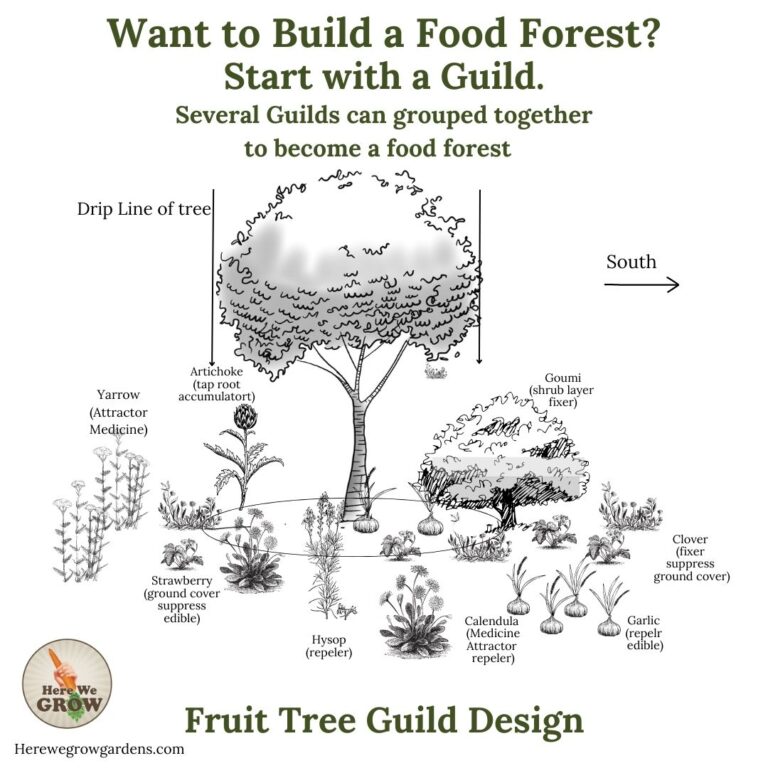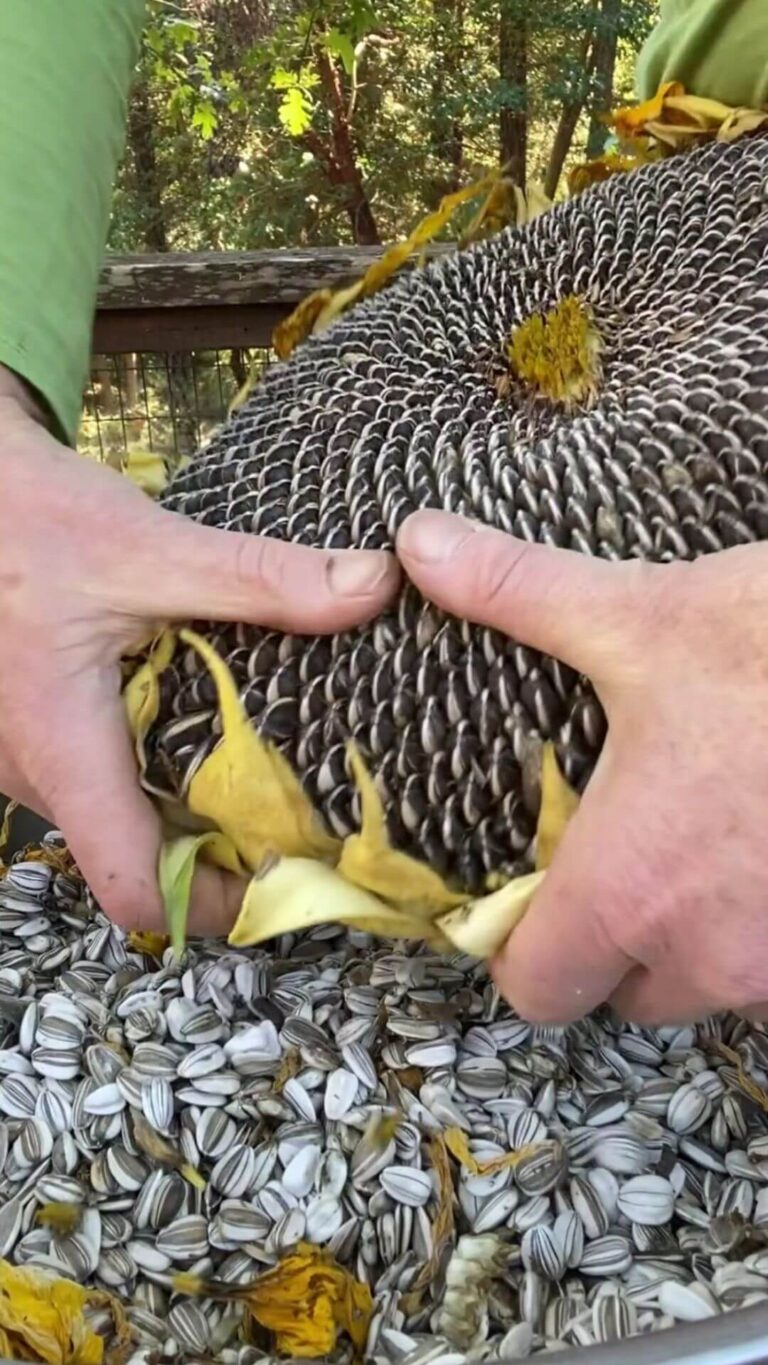Raised Garden Beds vs. In-Ground Beds: Pros & Cons
Are you building your first garden? Having trouble deciding between raised garden beds vs in ground beds? Here is a comparison of the drawbacks and benefits of using raised garden bed vs. planting directly in the ground, so you can decide what will work best for you.
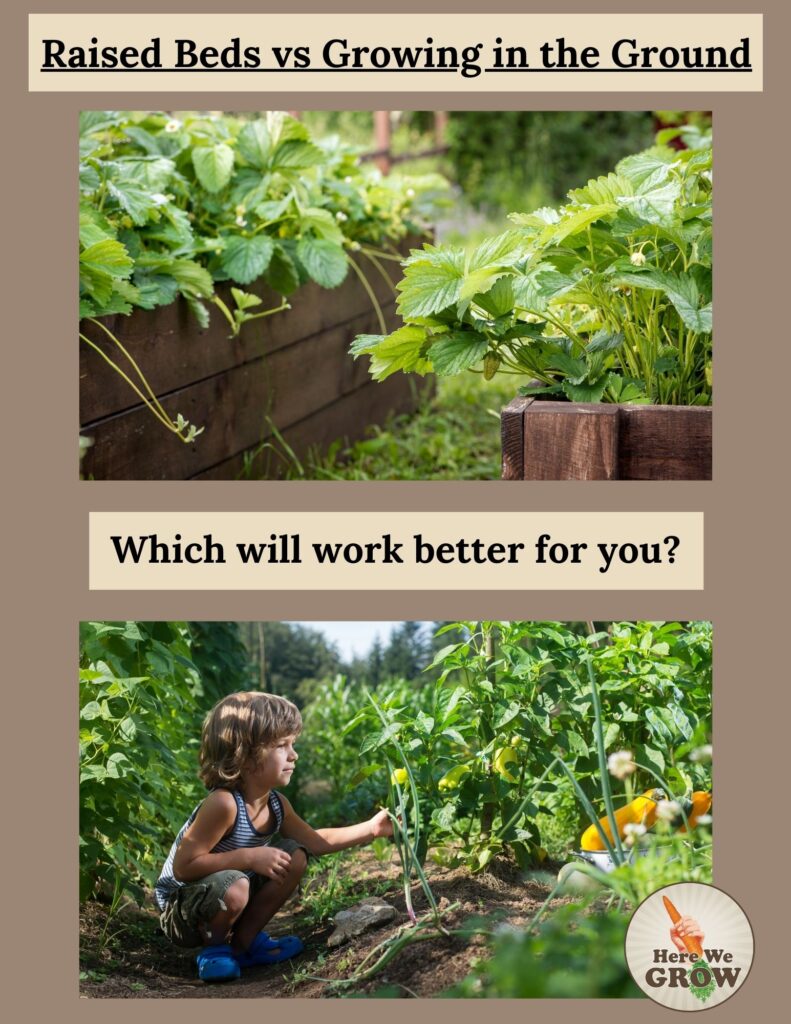
A raised garden bed is a container or box full of soil in which plants are grown, elevated above the ground. Raised beds are also called garden boxes or planter boxes. Raised Beds are most commonly constructed of wood lumber, though they can also be made of stone, bricks, concrete, metal, logs or landscape fabric. Raised beds are typically not filled with the naturally available soil in their surrounding environment; instead, these structures are filled with soil that is either purchased or moved in from another location. Raised garden beds are often used in lieu of planting directly in the ground.
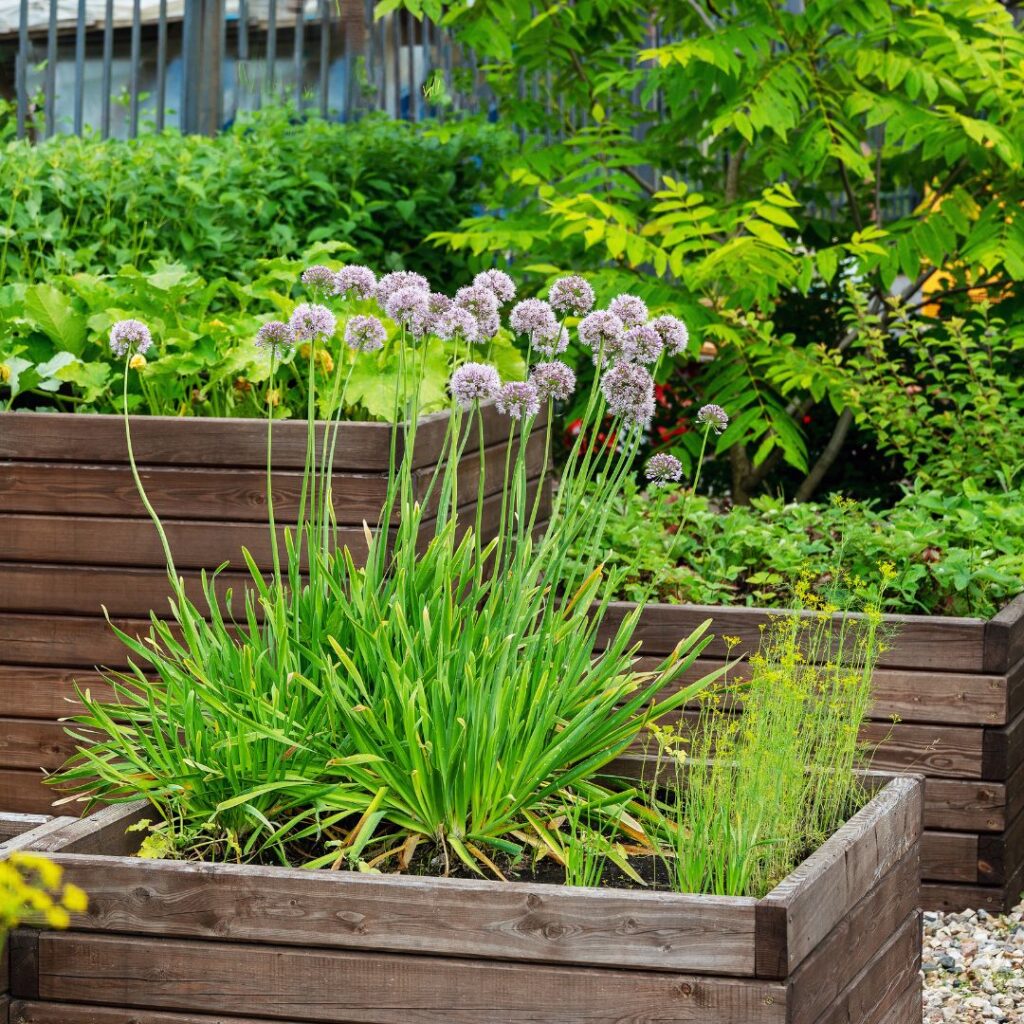
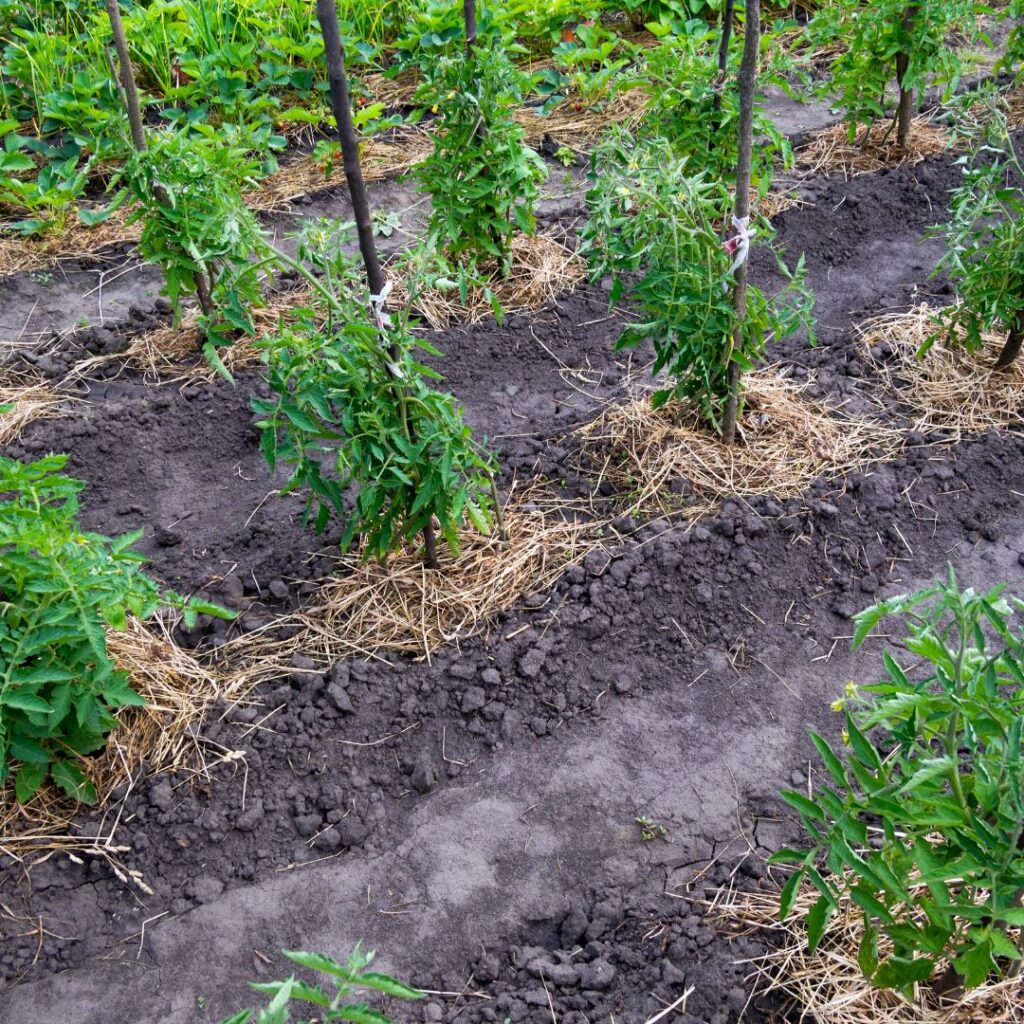
In-ground garden beds, there are no containers made of wood or masonry like raised beds. The garden beds are shaped into the existing soil and amended as needed. In-ground beds are created by either machine tilling or hand prepping the existing soil. Then amending, and adding compost and organic matter to the soil as needed. Some people prefer to shape their beds as slightly mounded in-ground planting space, with the pathway lower than the bed. This creates a distinct planting area from the surrounding yard space.
Let’s dig a bit deeper into their differences.
1) Soil quality
With raised garden beds, you have better control over the condition, quality, and texture of your soil. Rather than simply working with what you’ve got, the soil in raised beds is all imported into the bed frame, making it easy to have soil that your plants will love. Soil quality and composition is one of the most important factors that leads to a healthy and successful garden!
In general, raised beds are used when the soil quality is not high enough for planting. Meanwhile, in-ground ones suit areas where the natural soil is healthy enough to support vegetation.
If you are lucky enough to have the native soil in your garden fertile already, you have an ideal situation. Most gardeners find that their native soil is not suitable or desirable to grow food in for one reason or another. For example, the soil may be rocky, have poor drainage or too much clay or silt.



2) Temperature
The soil temperature in a raised bed warms up faster, which is helpful in the spring, but also dry out faster which means they need to be watered more often. I personally have struggled to keep my raised beds moist during the hottests days here in Oregon. In the fall the soil temperature gets cold or frozen more readily in a raised bed than in the ground beds. For example carrots planted in a raised bed will freeze at a lower temperature than in the ground beds.
3)Drainage
Raised beds drain very quickly which makes them easy to work and plant in the early wet spring. If you have soggy areas on your land or clay soil, a raised bed can provide a fluffy dry refuge from the muck. Because the raised beds drain quickly, the nutrients also drain out of the beds quickly which makes the need for regular amending.
4)Fertility
Also the bags of potting mix or soil that people buy for their raised beds tends to be low in organic matter, which has a foofy white -bread consistency. This soil has been really frustrating for me to deal with when I am trying to help my clients have a successful garden. My preference is good ol homemade compost and aged manures. In my experience the contact with the earth, with a mulched path on either side of the bed in an in-ground bed has worms, mycelium and another tiny life that seems to multiply and thrive with in-ground beds.
5)Expense
Raised beds are expensive to build even if you are doing the work yourself. Most wooden beds I have seen in Oregon tend to decay at about 10 years. In my own garden have gotten very creative using logs that are pinned together and have used bark standing on end to create free raised beds. I also once spent several days making a raised bed out of rocks that was lined with gopher wire. If you are resourceful you might be able to use found materials to construct your beds.
The raised beds are expensive to fill with purchased quality soil and costly to maintain the fertility.
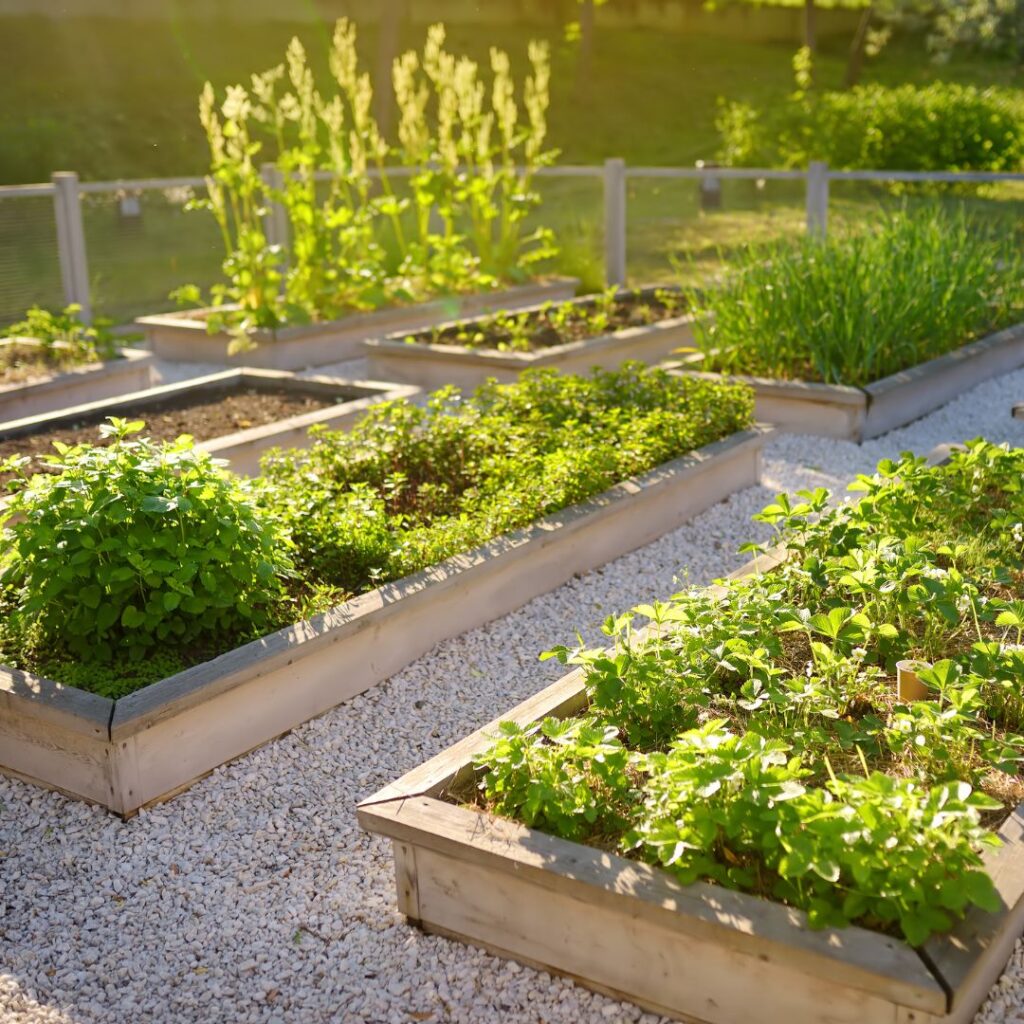
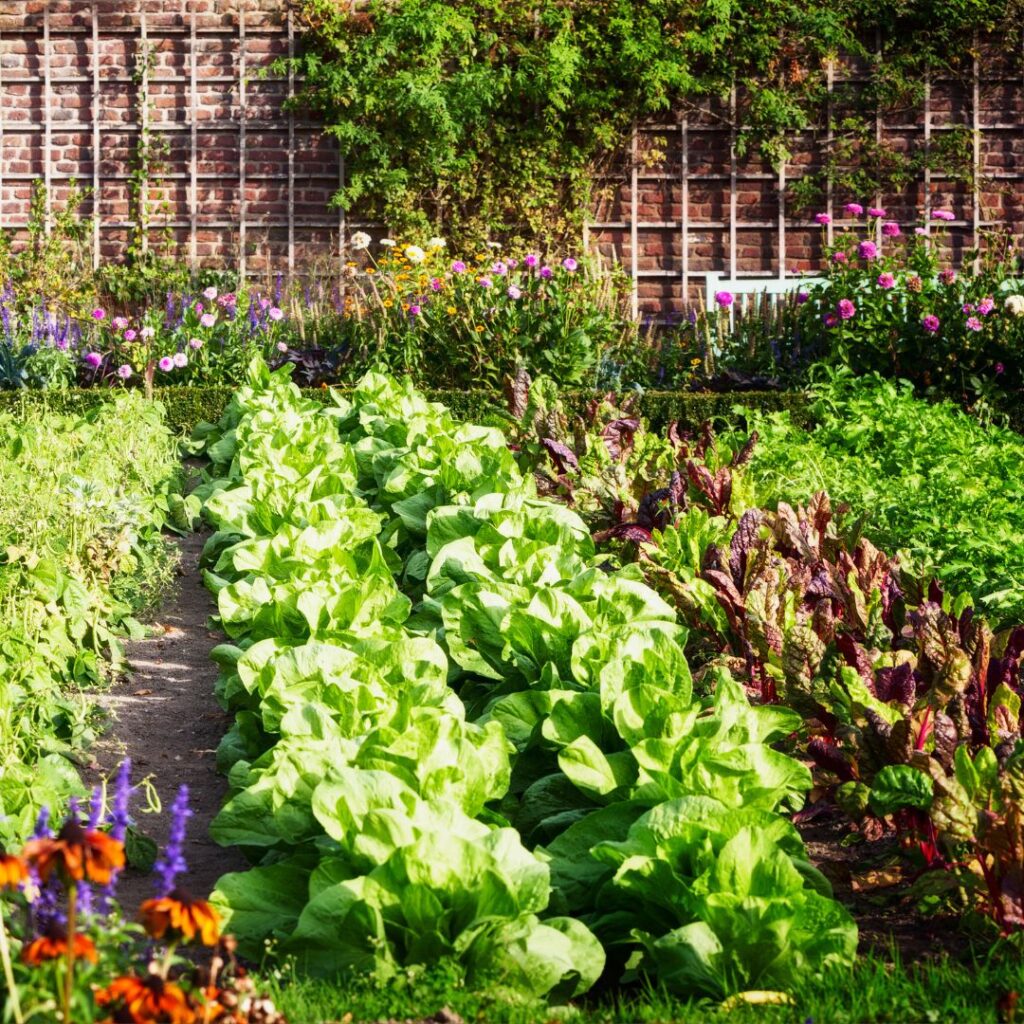
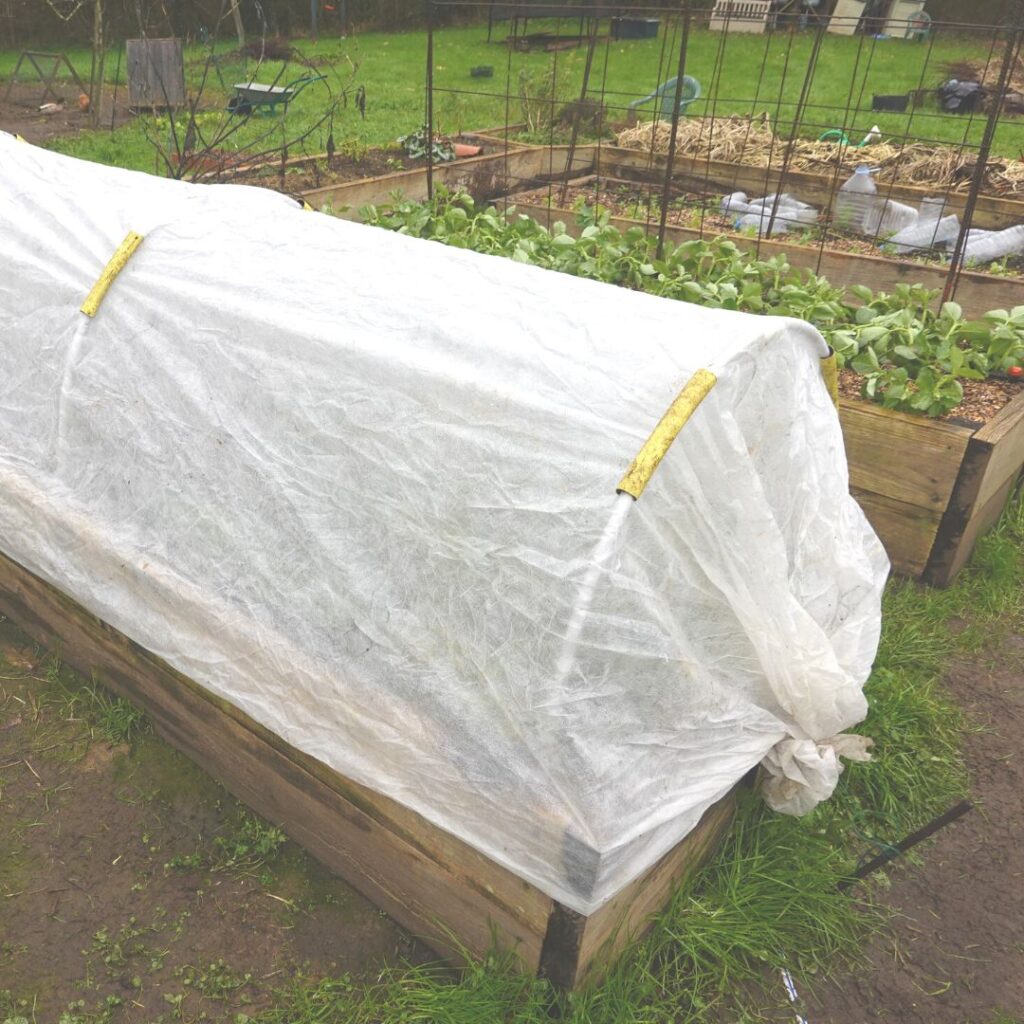
6) Excluding Pests and Diggers
For me, This the the most important reason to construct raised beds. We have a well established population of gophers, ground squirrels and moles here in Oregon. The gopher issue here is REAL. It is nearly impossible to grow root crops directly in the ground in our area because the gophers will eat it all. The ability to grow carrots and other root crops that are free from the pressures of these critters is a huge peace of mind for me.
It is really easy to add hoops mide of poly pipe to the side of a raised bed to support row covers or greenhouse plastic to extend the season and protect your plants. These hoops can also support netting or chicken wire to keep out the rodents, squirrels, birds, skunks, neighborhood cats and other pests The Raised bed garden area can be designed to include trellises or fencing that are attached to the beds to keep out the dogs or chickens.
7) Ergonomics and elderly gardeners
It sure is more comfortable to work in a bed that is raised off the ground. For some people getting down on the ground and squatting is difficult or impossible. Raised garden beds are more accessible for people who use a wheelchair, walker, or otherwise have trouble bending over or stooping.
If you do have limited mobility or back issues, make your raised beds no more than 4 feet wide, 3ft wide bed is even better if you have difficulty reaching to the middle. The sides of a raised bed can double as a seat if needed.
8)Your Esthetic Choice
In-ground gardens provide more flexibility for creative shapes and form fewer hard lines than raised beds. Some gardeners really like the tidy look of raised beds. The clean edges prevent pathway material like gravel or bark mulch from spilling into the planting area itself.
